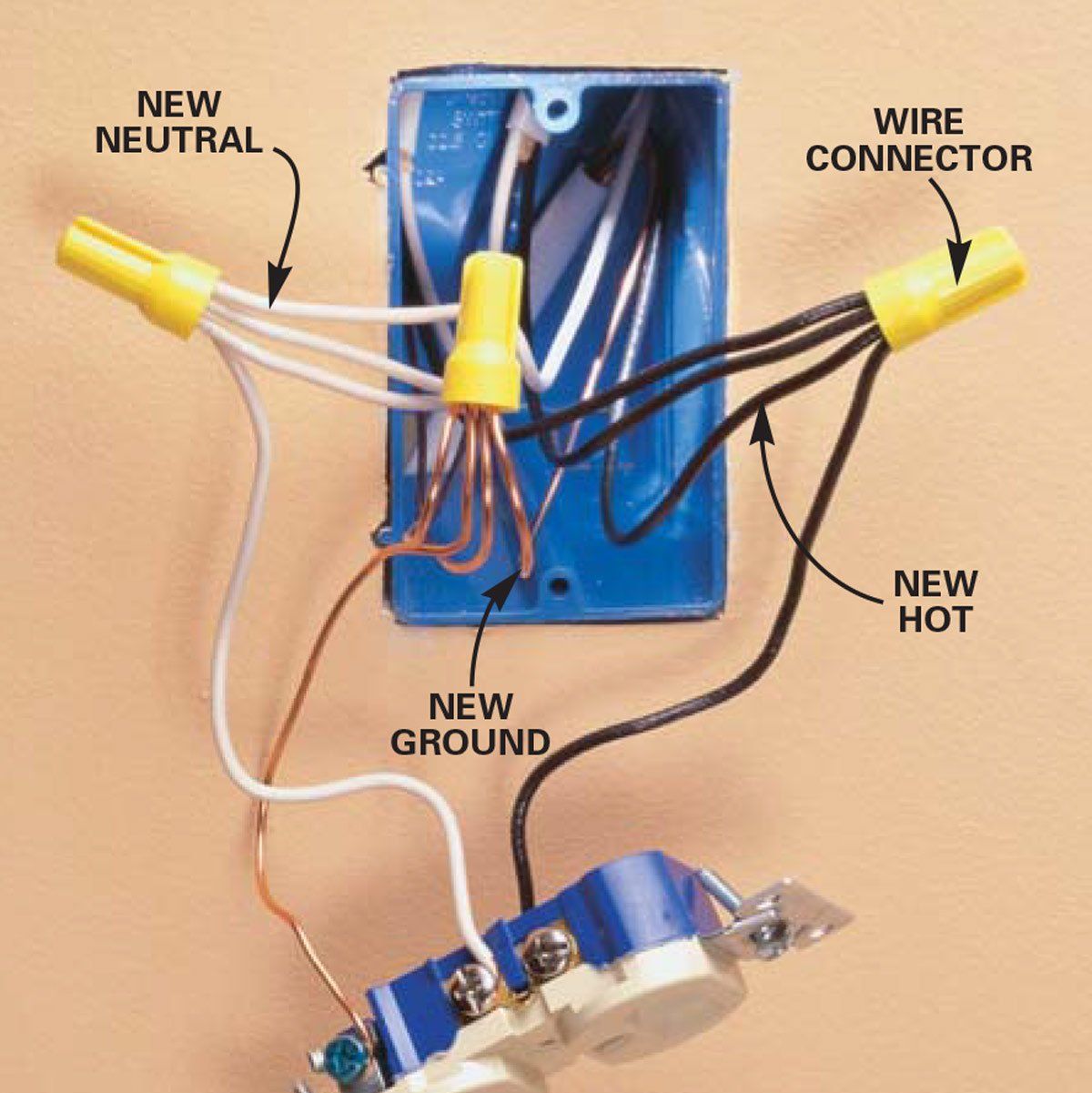Want to add an outlet to your wall? This guide will show you how, emphasizing safety and best practices. Whether it’s for a new appliance or eliminating extension cords, we’ll walk you through each step, from gathering tools to ensuring code compliance. Let’s empower your home with extra power!
Power Up Your Walls: Adding an Outlet
Adding an outlet might seem daunting, but with patience and the right knowledge, it’s manageable for many homeowners. However, electricity is hazardous, so safety is paramount.
Ensuring Safety: De-energize the Circuit
Before anything else, turn off the power at the breaker box for the target circuit. Double-check with a non-contact voltage tester. This small precaution is crucial.
Strategizing Outlet Placement
Consider convenience, but also building codes regarding outlet spacing from doors, windows, and other outlets. A shorter wiring path from an existing outlet simplifies the job. Longer runs might necessitate thicker gauge wire per local codes. Our guide on ADA toilet height can help if your new outlet is for a bathroom remodel, ensuring accessibility.
Assembling Your Tools and Materials
Here’s what you’ll need:
| Item | Description |
|---|---|
| Electrical Box | Matched to wall type (drywall or plaster) |
| Outlet | Compatible with the electrical box |
| Wire | Correct gauge (thickness) per local electrical code |
| Wire Connectors (Wire Nuts) | For secure wire joining |
| Voltage Tester | Essential for verifying power is OFF |
| Fish Tape (or similar) | Aids in pulling wire through wall cavities |
| Toolkit | Screwdrivers, wire strippers, pliers, level, measuring tape, etc. |
You might also consider adjustable closet panels if you’re working near a closet and want to optimize storage space.
Step-by-Step Installation
- Prepare the Existing Outlet: With the power OFF (double-check!), remove the faceplate and carefully disconnect wires, labeling each (black, white, ground). A photo before disconnecting is helpful.
- Install the New Box: Cut a hole for the new box, ensuring it’s the correct size. Securely attach the box to a wall stud or use appropriate mounting brackets. Correct installation is crucial for safety and stability. Different wall types require different methods.
- Run the Wire: Use a fish tape to feed from the new box to the existing one. Attach the wire and pull it through, leaving slack at both ends. Different wiring techniques exist, so research might be beneficial.
- Make the Connections: At the existing outlet, connect the new wires to the corresponding wires using wire nuts (black to black, white to white, ground to ground). At the new outlet, connect wires to the corresponding terminals (black to brass, white to silver, green to ground). Consult a wiring diagram if needed.
- Test the New Outlet: Turn the breaker back on. Use a receptacle tester to verify correct wiring and power.
- Install the Faceplate: Screw on the faceplate. You’ve added a new outlet!
Troubleshooting
- No Power: Double-check connections and the breaker. A wire might have come loose.
- Tripped Breaker: This probably suggests a short circuit or overload. Carefully check wiring. If the circuit is overloaded, redistribute appliances.
- Tripped GFCI: If the new outlet is a GFCI and it trips, there’s likely a ground fault. Check for moisture. If no cause is found, the GFCI itself might be faulty.
Advanced Installations
This guide covers basic installations. Complex scenarios (plaster/concrete walls, GFCI outlets, multiple outlets) might require a qualified electrician. Safety and proper installation are paramount.
Can I Piggyback an Outlet from Another Outlet?
Looking to add an outlet? Before calling an electrician, let’s explore “piggybacking”—connecting a new outlet to an existing one. While often viable, safety is paramount.
Prioritizing Safety: Powering Down
First, locate your breaker box and de-energize the relevant circuit. Double-check with a voltage tester.
There are two main methods: piggybacking (splicing) and running a new cable.
Piggybacking: A Convenient Option?
Piggybacking is popular for adding outlets near an existing one on the same circuit. It’s quick, but not always ideal.
Steps (if suitable):
- Kill the Power: Turn off the breaker and verify with a voltage tester.
- Expose the Existing Outlet: Unscrew and pull out the existing outlet, documenting the wiring configuration.
- Prepare the New Outlet: Strip insulation from the new outlet’s wires (about half an inch).
- Connect the Wires: Use wire nuts to connect corresponding wires (black to black, white to white, ground to ground). Ensure connections are tight.
- Secure the Outlets: Mount both outlets securely, ensuring no loose wires.
- Test the Outlet: Turn the breaker back on and test the new outlet with a receptacle tester.
Important: Piggybacking only works if the circuit can handle the additional load. Overloading can cause overheating or fire. Consult an electrician if unsure.
Running a New Cable: The Reliable Approach
If the new outlet is far from an existing one or the circuit is heavily loaded, running a new cable from the panel or a junction box is safer, though more involved.
Steps:
- Plan the Route: Determine the safest cable path.
- Clear the Path: Drill holes for the cable. A fish tape is helpful.
- Connect at the Source: Connect the new cable at the panel or junction box (matching colors).
- Wire the New Outlet: Connect the other end to the new outlet (matching colors).
- Secure and Test: Mount the outlet and test it.
220V Outlets: Professional Territory
For 220V appliances (ovens, dryers), don’t attempt DIY. These require specialized expertise.
Key Takeaways
- Safety First: Always disconnect power and test before working.
- Piggybacking: Convenient for nearby outlets, but watch the circuit load.
- New Cable: More involved, but safer and offers greater capacity.
- 220V: Call a professional.
- Know Your Limits: Understand circuit load. Consult an electrician when unsure.
Can I Add Another Outlet to an Existing Circuit?
Adding an outlet is often a doable DIY project, but safety and code compliance are crucial.
Assessing Your Circuit’s Capacity
Think of a circuit like a water pipe—it has a capacity limit. This limit is determined by the breaker’s amperage (usually 15 or 20 amps).
- Identify the Breaker: Locate the breaker and check its amperage.
- Current Usage: Calculate the total wattage of devices on the circuit.
- Future Needs: Factor in the wattage of anything you’ll plug into the new outlet.
- Calculations: A 15-amp circuit handles 1800 watts (15 amps x 120 volts). Leaving a 20% safety margin is recommended.
Caution: Older homes often have near-capacity circuits. Adding more can be hazardous. Consult an electrician if unsure.
Optimal Outlet Placement
Consider easy access and short wiring runs for efficiency and safety.
The Pigtail Wiring Method
Pigtailing is a common and safe method.
- Power Off: De-energize the circuit and test with a voltage tester.
- Existing Wires: Disconnect and label the wires from the existing outlet.
- Pigtails: Cut short wires (same gauge) and connect them to the corresponding wires from the existing and new outlets using wire nuts.
- New Outlet Installation: Mount the new outlet box and connect the pigtail wires to the outlet terminals, matching colors.
- Testing: Turn the breaker on slowly and test with a receptacle tester. Test any GFCI outlets on the circuit as well.
Tools and Materials (See previous section for details)
Key Takeaways
- Circuit Capacity: Assess before adding an outlet. Overloading is a fire hazard.
- Safety First: Always disconnect power and test.
- Wiring: Correct wiring is essential.
- Local Codes: Consult local regulations.
- Professional Help: When in doubt, consult an electrician.
Can I Daisy Chain Electrical Outlets?
While technically possible, daisy-chaining outlets—connecting them in series—is generally not recommended. It creates a single point of failure.
Daisy Chaining vs. Pigtailing
Pigtailing, where each outlet gets an independent connection, is safer and more reliable.
Why Pigtailing is Preferred
| Feature | Daisy Chaining | Pigtailing |
|---|---|---|
| Wiring | Less wire, seemingly simpler | More wire, initially more complex |
| Safety | Higher overload and fire risk | Greater safety, reduces overload risk |
| Troubleshooting | Difficult to isolate problems | Easier to identify and fix issues |
| Code Compliance | May violate codes | Generally adheres to codes |
| Cost | Potentially cheaper upfront | Might be slightly more expensive initially |
Daisy Chaining Hazards
Daisy-chaining can overload circuits, especially with high-power devices. Even a loose connection can be hazardous.
Daisy Chaining Precautions (if unavoidable – not recommended)
- Short Chains: Limit the number of outlets.
- Correct Wire Gauge: Use the correct size for the circuit.
- GFCI Outlets: Consult up-to-date resources and codes for special handling.
- Avoid Back-wiring: Use screw terminals.
Safe Outlet Installation: Pigtailing
- De-energize: Turn off the breaker and test.
- Secure the Box: Mount the new electrical box.
- Wiring: Run new cable to the new box.
- Pigtail Connections: Connect wires using wire nuts (matching colors).
- Test: Use a receptacle tester.
- Faceplate: Attach the faceplate.
Key Takeaways
- Pigtailing is safer and more reliable than daisy-chaining.
- Daisy-chaining increases fire risk.
- Always disconnect power before working.
- Consult local codes and consider a qualified electrician.
This information is for educational purposes only. Consult a licensed electrician before attempting electrical work. Local codes vary, and safety should always be prioritized.
- How to Measure Your Belt Size (for Women): 3 Easy & Accurate Methods - April 27, 2025
- How to Remove Permanent Hair Dye From Hair: Safe & Effective Methods - April 27, 2025
- How to Remove Ink from Leather: Effective DIY Methods and Expert Tips - April 27, 2025










